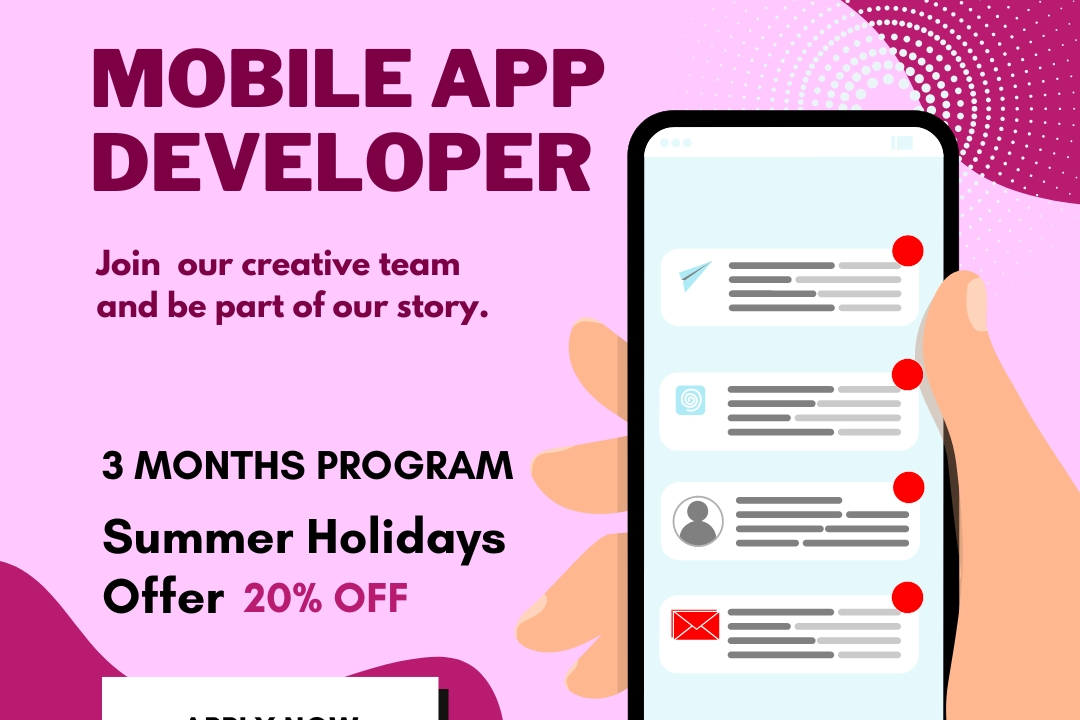Flutter Mobile Design Guidelines
Flutter Mobile Design Guidelines: Best Practices for UI/UX
Flutter Mobile Design Guidelines
Flutter mobile design guidelines emphasize creating visually appealing and user-friendly applications by adhering to Material Design principles for Android and Human Interface Guidelines for iOS. These guidelines advocate for consistency in design elements, such as color schemes, typography, and iconography, ensuring a seamless user experience. Flutter encourages the use of responsive layouts to accommodate various device sizes and orientations, alongside incorporating intuitive navigation patterns, clear call-to-action buttons, and appropriate spacing for better readability. Additionally, accessibility is a key consideration, promoting the inclusion of features like screen reader compatibility and adaptable UI elements to enhance usability for all users.
To Download Our Brochure: https://www.justacademy.co/download-brochure-for-free
Message us for more information: +91 9987184296
1 - Consistency: Ensure that your app maintains a consistent visual and functional style throughout. This includes using the same color scheme, typography, and iconography across all screens.
2) Material Design: Leverage Flutter's implementation of Material Design guidelines. This design language promotes intuitive usability and aesthetic appeal, emphasizing grid based layouts, padding, and responsive animations.
3) Responsive Layouts: Design layouts that adapt to different screen sizes and orientations. Use Flutter’s layout widgets (like `Flexible`, `Expanded`, and `MediaQuery`) to create responsive user interfaces.
4) Typography: Use a clear and readable font size hierarchy. Flutter allows for easy text styling with `TextStyle`, so set appropriate sizes, weights, and line heights to enhance readability.
5) Color Palette: Choose a cohesive color palette that conveys your brand and enhances usability. Utilize color contrast for accessibility, ensuring that text is easy to read against varying background colors.
6) Navigation Design: Implement intuitive navigation patterns like Bottom Navigation Bars or Drawer Navigation. These UI elements should be easily discoverable and provide a seamless way for users to explore your app.
7) Feedback: Provide visual feedback to users when they interact with UI elements. Use animations and transitions to indicate actions like button presses, loading states, and form submissions to enhance user experience.
8) Iconography: Choose intuitive icons that represent the actions they signify. Flutter allows customization of icons, so select shapes and colors that fit your app’s overall design language.
9) Touch Targets: Ensure that touch targets (like buttons) are large enough to be tapped easily. A minimum target size of 48x48 dp is recommended to enhance usability on mobile devices.
10) Loading Indicators: Use loading indicators to inform users that tasks are in progress. Flutter provides various options such as `CircularProgressIndicator` or custom animations to keep users engaged during waits.
11) Accessibility: Design for accessibility by using semantic labels, color contrast, and scalable text. Flutter supports accessibility features, ensuring that your app can be used by everyone.
12) State Management: Utilize proper state management solutions (like Provider, Riverpod, or BLoC) to handle app state effectively. This helps in maintaining the app’s performance and makes it easier to implement complex UI changes.
13) Minimize Input: Reduce the need for user input by using default values and autocomplete features. Consider using dropdown menus or toggle switches to streamline user interactions.
14) Training Program on Animations: Teach students about the importance of animations in enhancing user experience. Show them how to use Flutter's built in animations, such as `AnimatedContainer` or the `AnimationController`.
15) Error Handling: Design informative error messages that help users understand what went wrong and how to fix it. Use dialogues, snack bars, or error widgets that display clear instructions and options to retry.
By including these points in your training program, students will get a comprehensive overview of Flutter mobile design guidelines that can aid in creating user friendly and engaging mobile applications.
Browse our course links : https://www.justacademy.co/all-courses
To Join our FREE DEMO Session: Click Here
Contact Us for more info:
full stack developer course online free
Flutter Training in Balaghat
c# vs java
Android Training Guntur
Flutter Training in Dhenkanal











